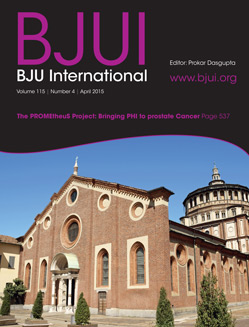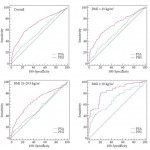Editorial: Time to replace PSA with the PHI?
Yet more evidence that the PHI consistently outperforms PSA across diverse populations
The Prostate Health Index (PHI) has regulatory approval in >50 countries worldwide and is now being incorporated into prostate cancer guidelines; for example, the 2014 National Comprehensive Cancer Network Guidelines for early prostate cancer detection discuss the PHI as a means to improve specificity, using a threshold score of 35 [1]. The PHI is also discussed in the Melbourne Consensus Statement [2], and it has been incorporated into the multivariable Rotterdam risk calculator smartphone app for use in point-of-care decisions [3].
As the use of this test continues to expand, more data on its performance in specific at-risk populations are of great interest. The investigators from the PROMEtheus multicentre European trial have previously validated the use of the PHI in men with a positive family history of prostate cancer [4]. The new study by Abrate et al. in this issue of BJUI instead addresses another high-risk population – obese men – who have previously been shown to have a greater risk of aggressive prostate cancer [5].
Among the 965 participants in the PROMEtheus study, 14.7% were considered obese based on a body mass index ≥30 kg/m2. In this group, 45.8% were diagnosed with prostate cancer from a ≥12-core biopsy, and 67.7% had a Gleason score ≥7. Overall, the PHI significantly outperformed PSA for prostate cancer detection in men with a body mass index ≥30 kg/m2 (area under the curve 0.839 vs 0.694; P < 0.001). At 90% sensitivity, the threshold for PHI in obese men was 35.7, with a specificity of 52.3%. The PHI also had the best performance for the detection of Gleason ≥7 disease, with an area under the curve of 0.89.
These findings add to the highly consistent body of evidence supporting the use of the PHI in early prostate cancer detection and risk stratification. In fact, all published studies to date have shown that the PHI outperforms PSA for detection of overall and high-grade prostate cancer detection on biopsy [6]. Numerous studies have also shown a role for the PHI in patient selection and monitoring during active surveillance [7, 8]. Expanded use of this test is warranted to reduce unnecessary biopsies and better identify cancers with life-threatening potential.
1 National Comprehensive Cancer Network Clinical Practice Guidelines in Oncology. Prostate Cancer Early Detection Version 2014. https://www.nccn.org/professionals/physician_gls/pdf/prostate_detection.pdf.Accessed May 26, 2014
2 Murphy DG, Ahlering T, Catalona WJ et al. The melbourne consensus statement on the early detection of prostate cancer. BJU Int 2014; 113:186–8
3 Roobol M, Salman J, Azevedo N. Abstract 857: The Rotterdam Prostate Cancer Risk Calculator: Improved Prediction with More Relevant Pre-Biopsy Information, Now in the Palm of Your Hand. Stockholm: European Association of Urology, 2014
4 Lazzeri M, Haese A, Abrate A et al. Clinical performance of serum prostate-specific antigen isoform [-2]pr oPSA (p2PS A) and its derivatives, %p2PSA and the prostate health index (PHI), in men with a family history of prostate cancer: results from a multicentre European study, the PROMEtheuS project. BJU Int 2013; 112:313–21
5 Freedland SJ, Banez LL, Sun LL, Fitzsimons NJ, Moul JW. Obese men have higher-grade and larger tumors: an analysis of the duke prostate center database. Prostate Cancer Prostatic Dis 2009; 12: 259–63
6 Filella X, Gimenez N. Evaluation of [-2] proPSA and Prostate Health Index (phi) for the detection of prostate cancer: a systematic review and meta-analysis. Clin Chem Lab Med 2013; 51: 729–39
7 Tosoian JJ, Loeb S, Feng Z et al. Association of [-2]proPSA with Biopsy Reclassification During Active Surveillance for Prostate Cancer. J Urol2012; 188: 1131–6
8 Hirama H, Sugimoto M, Ito K, Shiraishi T, Kakehi Y. The impact of baseline [-2]proPSA-related indices on the prediction of pathological reclassification at 1 year during active surveillance for low-risk prostate cancer: the Japanese multicenter study cohort. J Cancer Res Clin Oncol2014; 140: 257–63



